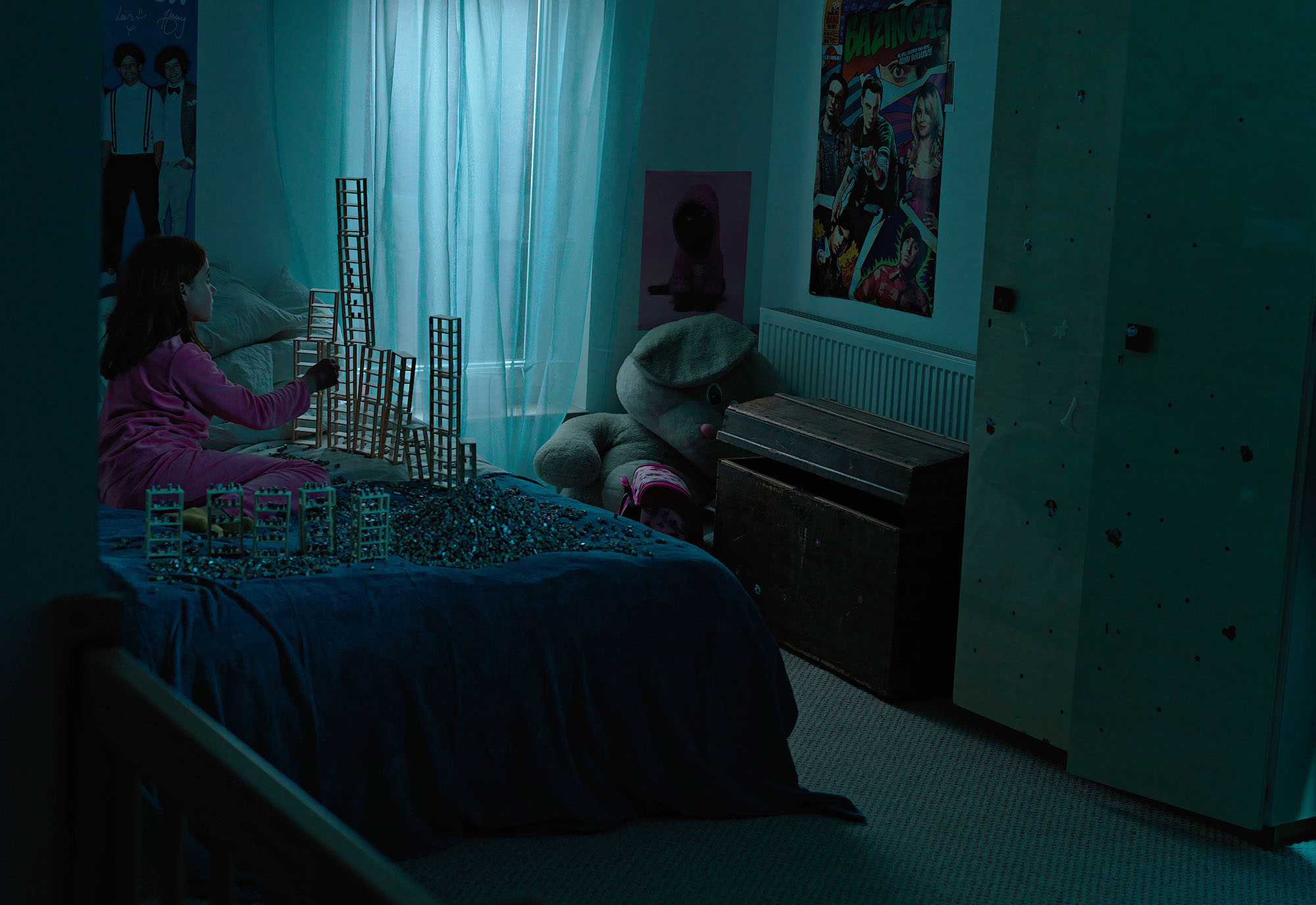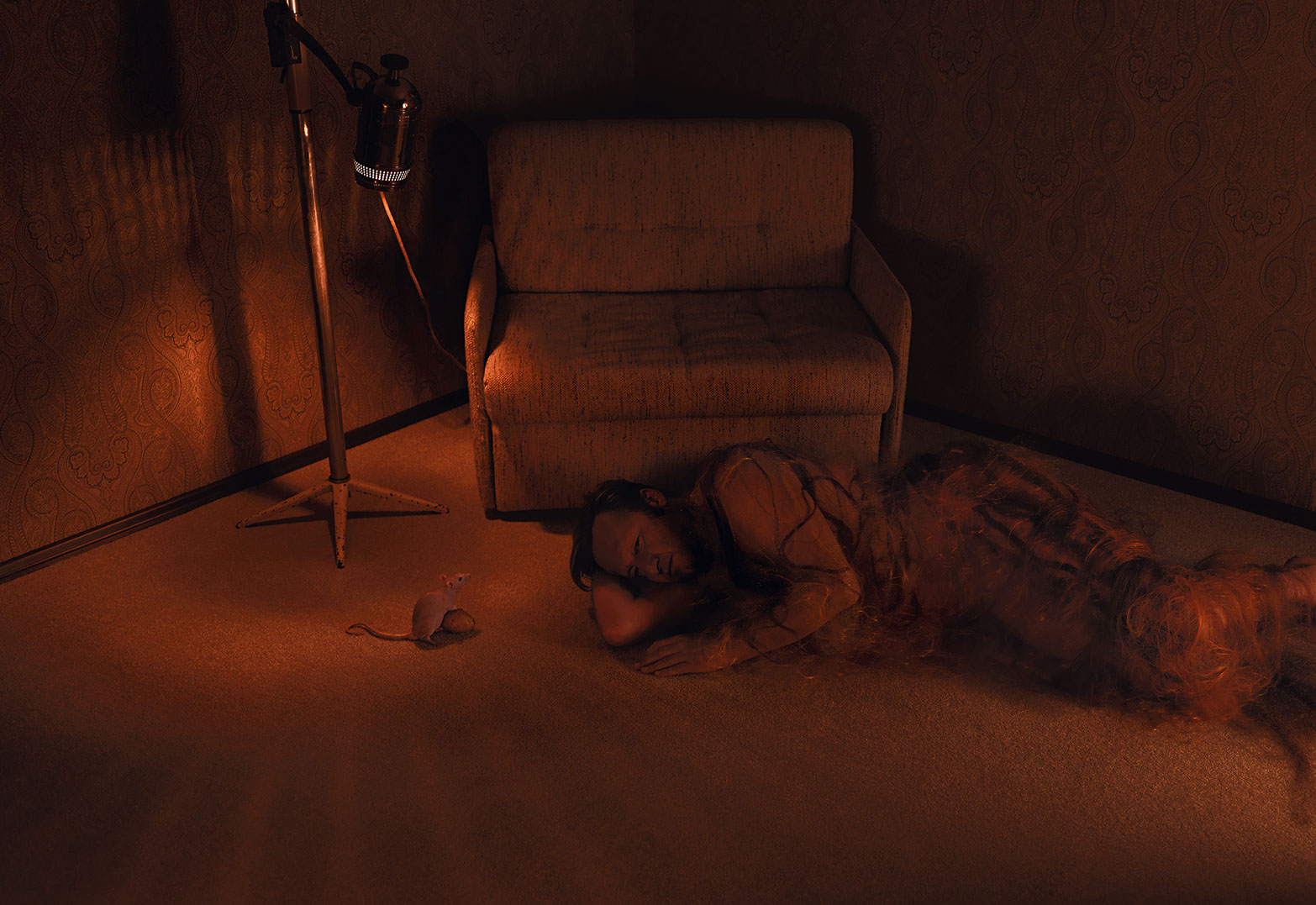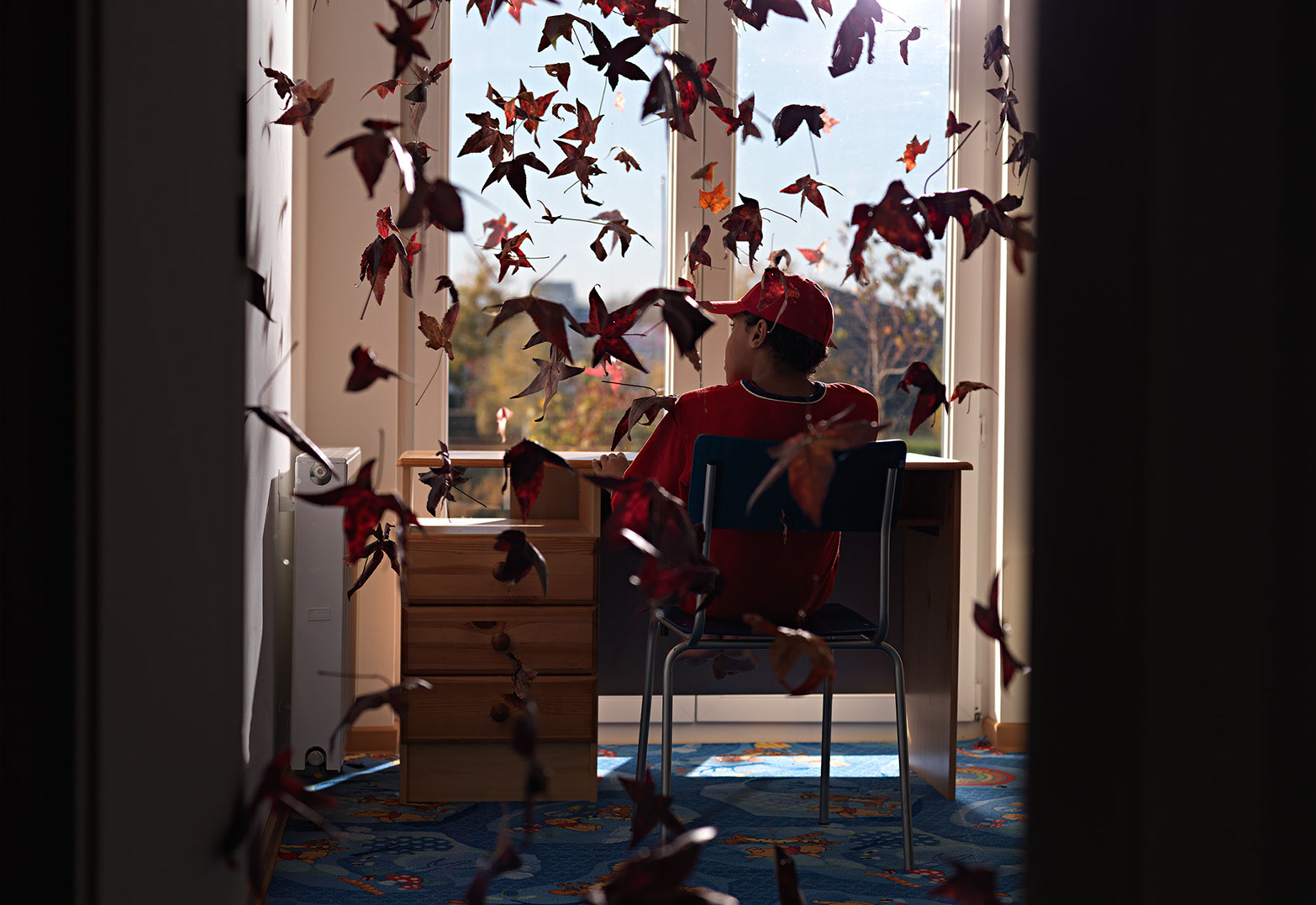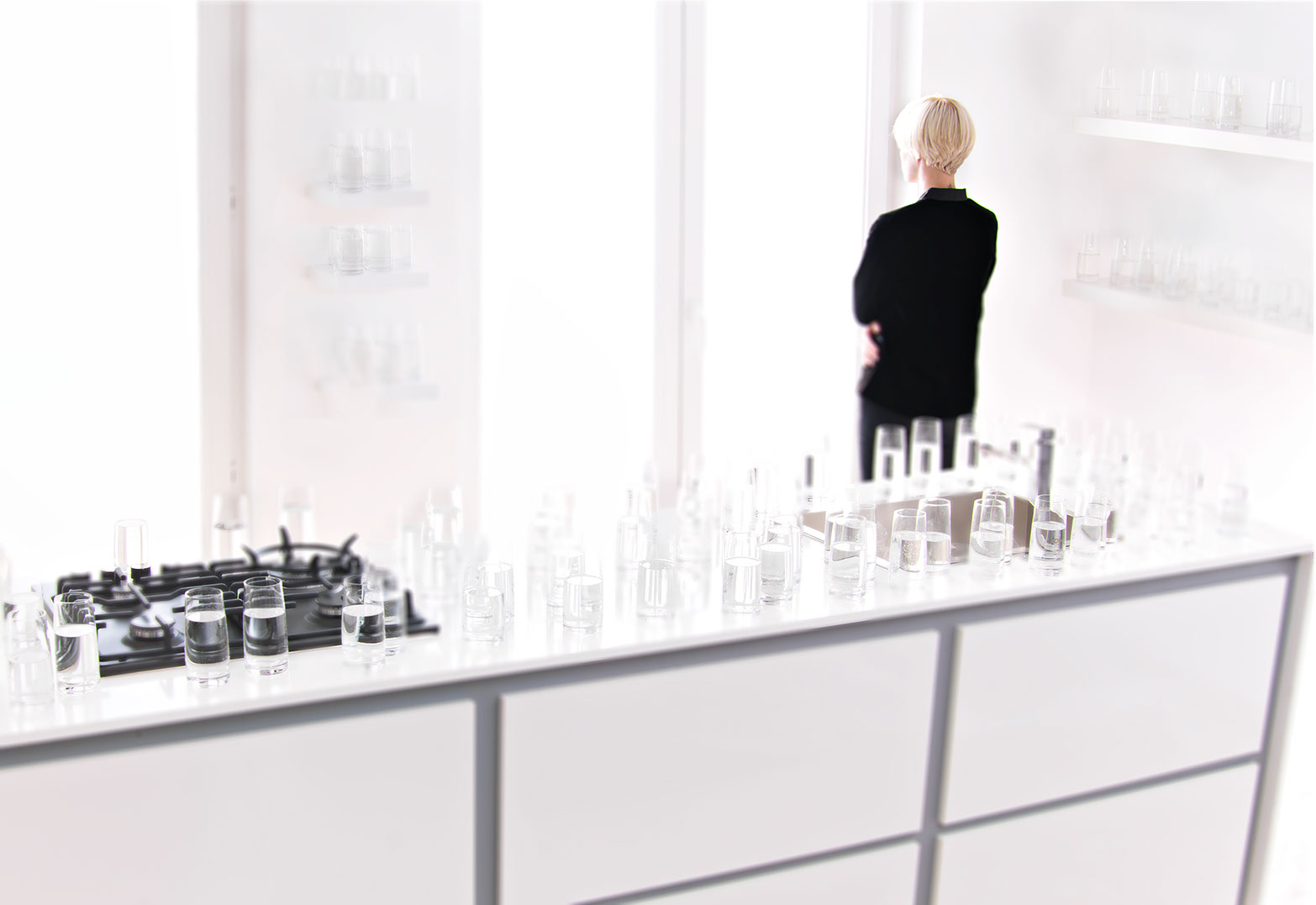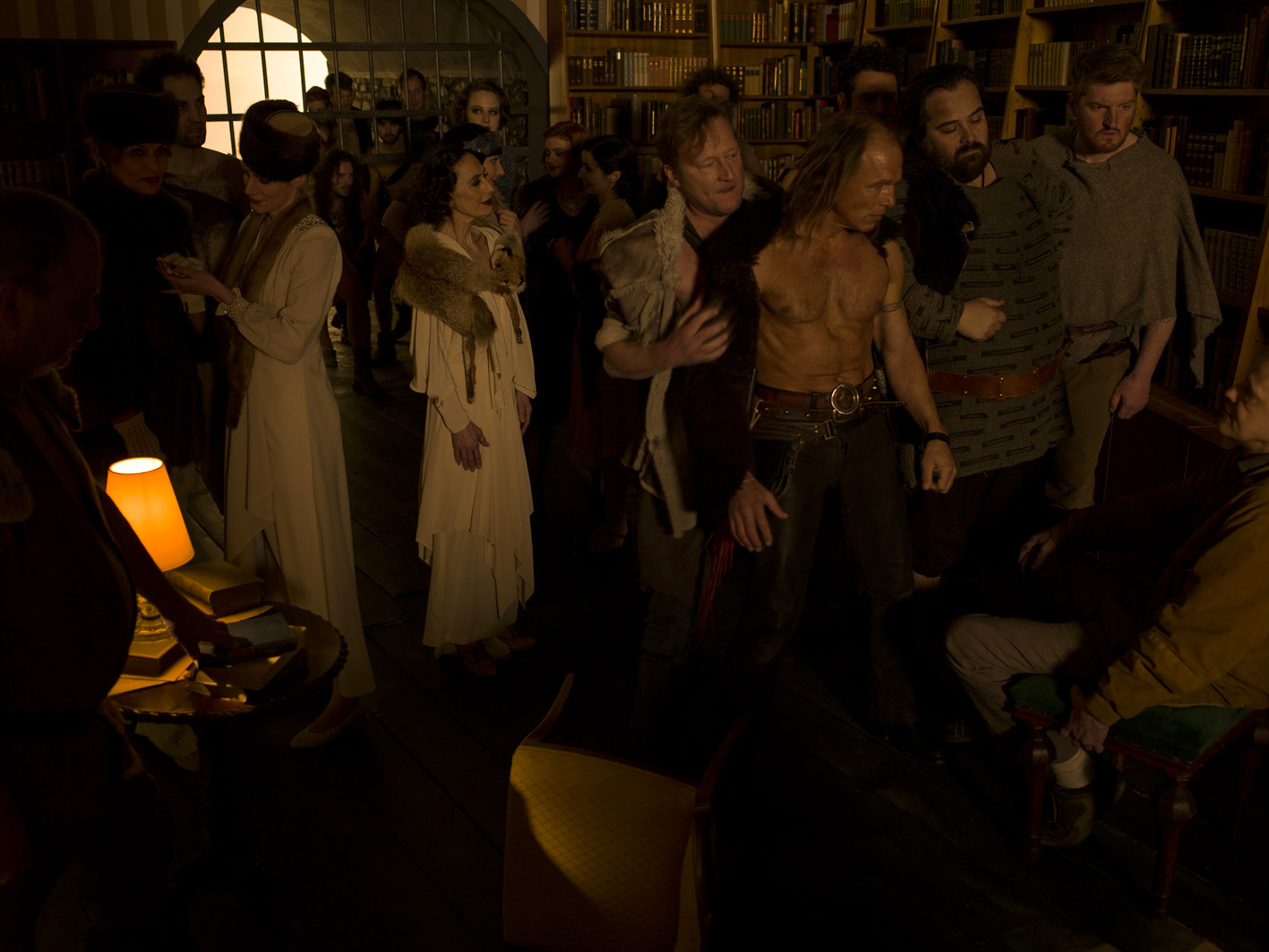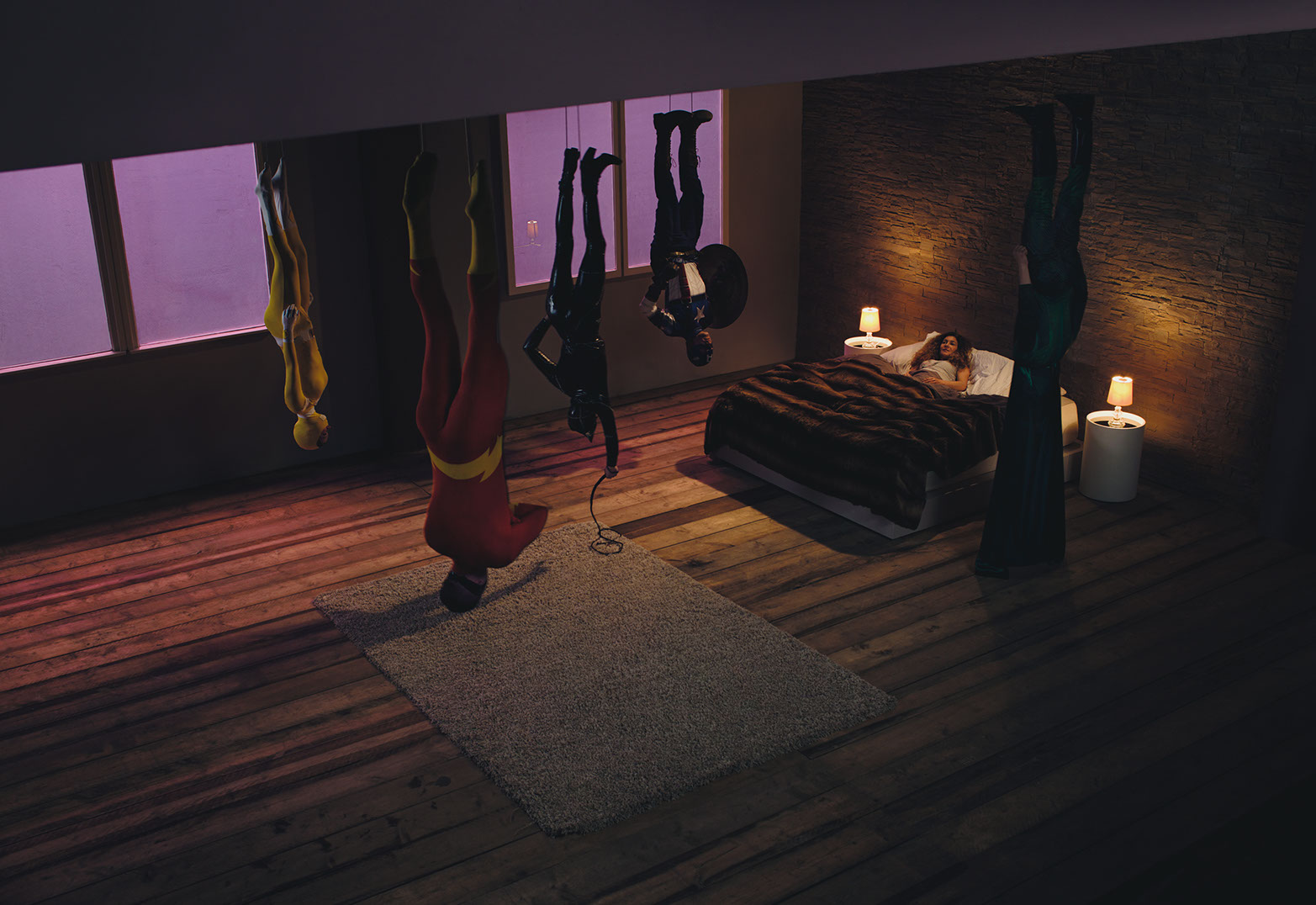ISMNS
I never see myself
The perception of reality is shaped by various factors such as age, upbringing, and exposure to media. These factors influence the neurological processes that determine how our brains interpret the information received from our senses. As an artist, I am intrigued by these processes and the resulting perceptions. I explore how neurological processes and perceptions of reality can be represented, drawing inspiration from art history, particularly surrealism.
However, my focus is not on depicting dreams or expanding consciousness, like the surrealists did. Instead, I aim to represent medical case studies of hallucinations caused by conditions such as fear, darkness, migraines, epilepsy, or Charles Bonnet syndrome. I intentionally avoid drug-induced hallucinations and aim to showcase the effects of other circumstances and neurological changes from the norm. I achieve this through staged photography, using these medical case studies as the foundation for my compositions. My goal is to demonstrate how social norms influence and guide our neurological processes of perception.
To create my work, I adopt a methodical approach. I use 3D programs to design scenes and utilize render programs to create specific lighting moods. I then cast actors, design costumes, and create makeup images. The practical execution takes place in a film studio, and I employ a digital medium format camera, the Hasselblad H4D, to capture the scenes.
Scientific accuracy is essential in all my work. I strive to avoid abstraction and ensure that the foundation of my work is grounded in scientific principles. The environments in which my scenes unfold must strike a delicate balance between reality and unreality. Not all my works require the same level of effort as previous ones; I aim to create a series that is harmonious yet also contrasting.
In the early stages of my studies, I focused on painting. However, I came to realize that painting alone would not allow me to achieve my artistic goals. This led me to explore new mediums such as film, audio, and photography, which opened up a world of possibilities for my creative work. Nowadays, my projects always begin with a concept rooted in society or psychological conditions. The technical execution is just as crucial as the concept itself since the discovery of new technical means is equally important to the creation of the artwork.
The idea behind the concept fascinates me—the idea that a project can be meticulously planned yet still contain surprising and unpredictable elements. I strive for my final works to evoke fascination, reflection, inquiry, and understanding.
